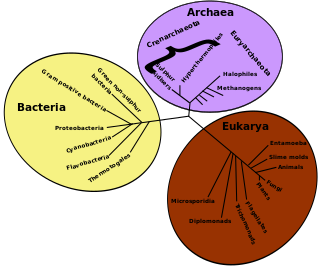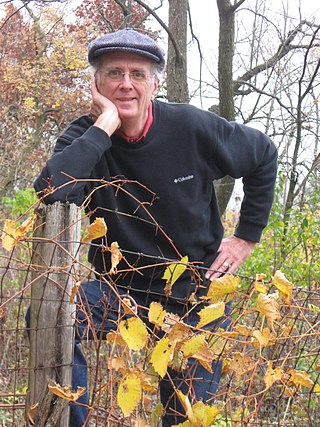Related Research Articles

Margaret Mead was an American cultural anthropologist, author and speaker, who appeared frequently in the mass media during the 1960s and the 1970s.

In ecology, a niche is the match of a species to a specific environmental condition. It describes how an organism or population responds to the distribution of resources and competitors and how it in turn alters those same factors. "The type and number of variables comprising the dimensions of an environmental niche vary from one species to another [and] the relative importance of particular environmental variables for a species may vary according to the geographic and biotic contexts".

A ritual is a sequence of activities involving gestures, words, actions, or revered objects. Rituals may be prescribed by the traditions of a community, including a religious community. Rituals are characterized, but not defined, by formalism, traditionalism, invariance, rule-governance, sacral symbolism, and performance.
Community psychology is concerned with the community as the unit of study. This contrasts with most psychology, which focuses on the individual. Community psychology also studies the community as a context for the individuals within it, and the relationships of the individual to communities and society. Community psychologists seek to understand the functioning of the community, including the quality of life of persons within groups, organizations and institutions, communities, and society. They aim to enhance the quality of life through collaborative research and action.

Evolutionary ecology lies at the intersection of ecology and evolutionary biology. It approaches the study of ecology in a way that explicitly considers the evolutionary histories of species and the interactions between them. Conversely, it can be seen as an approach to the study of evolution that incorporates an understanding of the interactions between the species under consideration. The main subfields of evolutionary ecology are life history evolution, sociobiology, the evolution of interspecific interactions and the evolution of biodiversity and of ecological communities.
Ecological anthropology is a sub-field of anthropology and is defined as the "study of cultural adaptations to environments". The sub-field is also defined as, "the study of relationships between a population of humans and their biophysical environment". The focus of its research concerns "how cultural beliefs and practices helped human populations adapt to their environments, and how people used elements of their culture to maintain their ecosystems". Ecological anthropology developed from the approach of cultural ecology, and it provided a conceptual framework more suitable for scientific inquiry than the cultural ecology approach. Research pursued under this approach aims to study a wide range of human responses to environmental problems.

Roy Abraham Rappaport (1926–1997) was an American anthropologist known for his contributions to the anthropological study of ritual and to ecological anthropology.
Ecological systems theory is a broad term used to capture the theoretical contributions of developmental psychologist Urie Bronfenbrenner. Bronfenbrenner developed the foundations of the theory throughout his career, published a major statement of the theory in American Psychologist, articulated it in a series of propositions and hypotheses in his most cited book, The Ecology of Human Development and further developing it in The Bioecological Model of Human Development and later writings. A primary contribution of ecological systems theory was to systemically examine contextual variability in development processes. As the theory evolved, it placed increasing emphasis on the role of the developing person as an active agent in development and on understanding developmental process rather than "social addresses" as explanatory mechanisms.
Charles D. Laughlin, Jr. is a neuroanthropologist known primarily for having co-founded a school of neuroanthropological theory called "biogenetic structuralism." Laughlin is an emeritus professor of anthropology and religion at Carleton University in Ottawa, Canada.
Neuroanthropology is the study of the relationship between culture and the brain. This field of study emerged from a 2008 conference of the American Anthropological Association. It is based on the premise that lived experience leaves identifiable patterns in brain structure, which then feed back into cultural expression. The exact mechanisms are so far ill defined and remain speculative.
Robert A. Rubinstein is a cultural anthropologist whose work bridges the areas of political and medical anthropology, and the history and theory of the discipline. He is a Distinguished Professor of Anthropology and Professor of International Relations at the Maxwell School of Syracuse University.
Andrew P. "Pete" Vayda was a Hungarian-born American anthropologist and ecologist who was a distinguished professor emeritus of anthropology and ecology at Rutgers University.
The evolutionary psychology of religion is the study of religious belief using evolutionary psychology principles. It is one approach to the psychology of religion. As with all other organs and organ functions, the brain's functional structure is argued to have a genetic basis, and is therefore subject to the effects of natural selection and evolution. Evolutionary psychologists seek to understand cognitive processes, religion in this case, by understanding the survival and reproductive functions they might serve.

Reo Franklin Fortune was a New Zealand-born social anthropologist. Originally trained as a psychologist, Fortune was a student of some of the major theorists of British and American social anthropology including Alfred Cort Haddon, Bronislaw Malinowski and Alfred Radcliffe-Brown. He lived an international life, holding various academic and government positions: in China, at Lingnan University from 1937 to 1939; in Toledo, Ohio, USA from 1940 to 1941; at the University of Toronto, from 1941 to 1943; in Burma, as government anthropologist, from 1946 to 1947; and finally, at Cambridge University in the United Kingdom from 1947 to 1971, as lecturer in social anthropology specialising in Melanesian language and culture.
Eugene G. d'Aquili (1940–1998) was a research psychiatrist who specialized in studying members of religious communities.
Digital Live Art is the intersection of Live Art, Computing and Human Computer Interaction (HCI). It is used to describe live performance which is computer mediated - an orchestrated, temporal witnessed event occurring for any length of time and in any place using technological means. Digital Live Art borrows the methods, tools and theories from HCI to help inform and analyze the design and evaluation of Digital Live Art experiences.
Environmental anthropology is a sub-discipline of anthropology that examines the complex relationships between humans and the environments which they inhabit. This takes many shapes and forms, whether it be examining the hunting/gathering patterns of humans tens of thousands of years ago, archaeological investigations of early agriculturalists and their impact on deforestation or soil erosion, or how modern human societies are adapting to climate change and other anthropogenic environmental issues. This sub-field of anthropology developed in the 1960s from cultural ecology as anthropologists borrowed methods and terminology from growing developments in ecology and applied them to understand human cultures.
Cognitive ecology of religion is an integrative approach to studying how religious beliefs covary with social and natural dynamics of the environment. This is done by incorporating a cognitive ecological perspective to cross-cultural god concepts. Religious beliefs are thought to be a byproduct of domain-specific cognitive modules that give rise to religious cognition. The cognitive biases leading to religious belief are constraints on perceptions of the environment, which is part and parcel of a cognitive ecological approach. This means that they not only shape religious beliefs, but they are determinants of how successfully cultural beliefs are transmitted.
Cognitive ecology is the study of cognitive phenomena within social and natural contexts. It is an integrative perspective drawing from aspects of ecological psychology, cognitive science, evolutionary ecology and anthropology. Notions of domain-specific modules in the brain and the cognitive biases they create are central to understanding the enacted nature of cognition within a cognitive ecological framework. This means that cognitive mechanisms not only shape the characteristics of thought, but they dictate the success of culturally transmitted ideas. Because culturally transmitted concepts can often inform ecological decision-making behaviors, group-level trends in cognition are hypothesized to address ecologically relevant challenges.

Bill Jordan, more formally William R. Jordan III, is an American botanist and journalist who has played a leading role in the development and critique of ecological restoration as a means of developing an environmentalism that is philosophically more coherent, psychologically more productive, politically more robust, and ecologically more effective. His critique has had a significant influence on environmentalism in the United States and abroad.
References
- D'Aquili, Eugene G., Charles D. Laughlin and John McManus (1979) The Spectrum of Ritual. New York: Columbia University Press.
- Laughlin, C.D. and I.A. Brady (1978) Extinction and Survival in Human Populations. New York: Columbia University Press.
- Laughlin, Charles D., John McManus and Eugene G. d'Aquili (1990) Brain, Symbol and Experience: Toward a Neurophenomenology of Consciousness. New York: Columbia University Press.
- Rappaport, R.A. (1968) Pigs for the Ancestors. New Haven: Yale University Press.
- Rappaport, R.A. (1979) Ecology, Meaning and Religion. Richmond: North Atlantic Books.
- Rappaport, R.A. (1984) Pigs for the Ancestors. 2nd edition. New Haven: Yale University Press.
- Rappaport, R.A. (1999) Ritual and Religion in the Making of Humanity . Cambridge: Cambridge University Press.
- Rubinstein, R.A., C.D. Laughlin and J. McManus (1984) Science As Cognitive Process. Philadelphia: University of Pennsylvania Press.